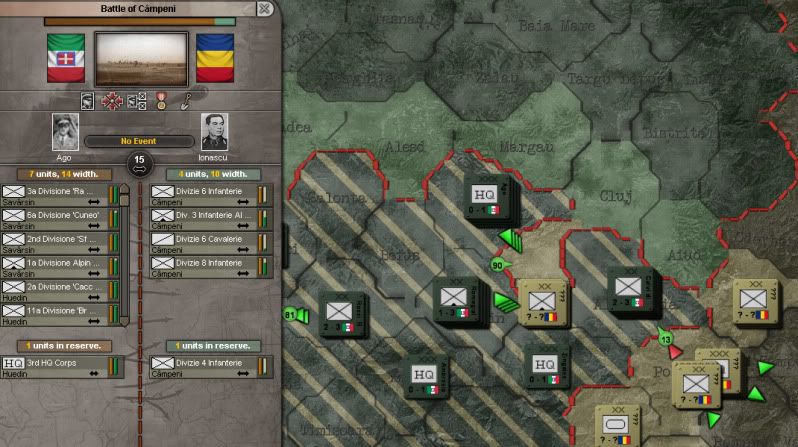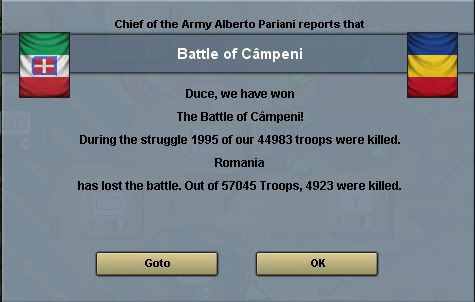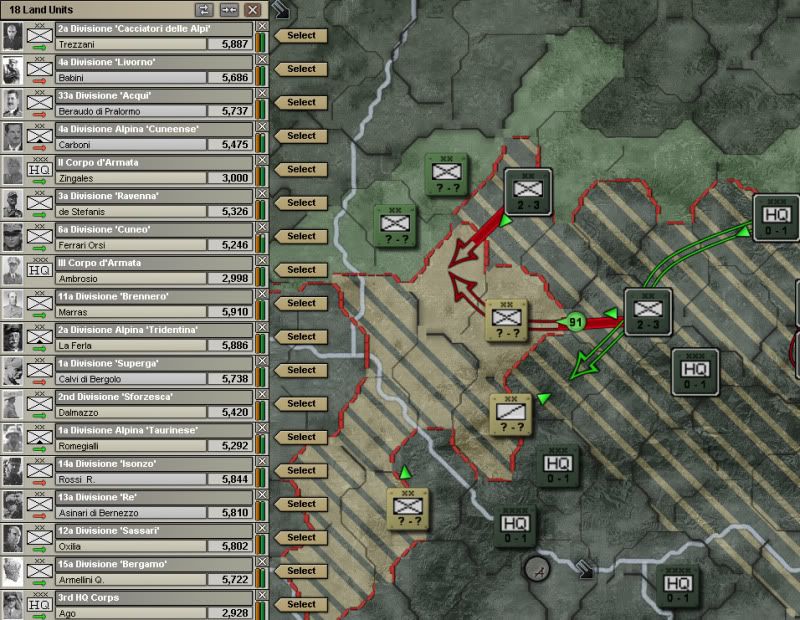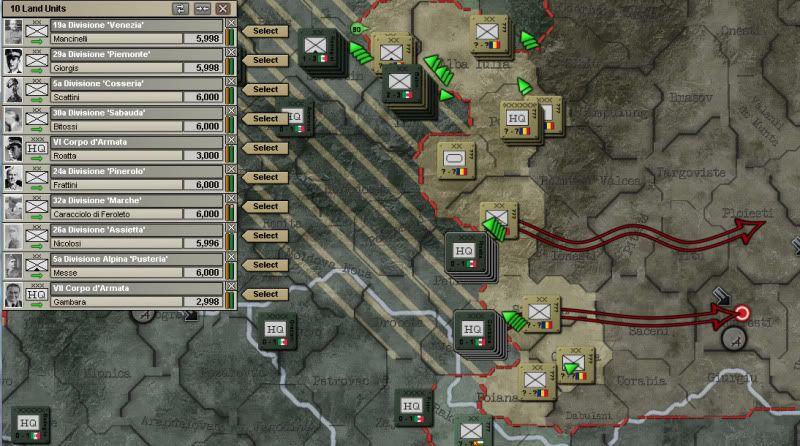The Year Italy Joined the World War
Part 6: Operation Trajan III, 29 June – July 15, 1940
This period of sixteen days encompasses the period that Graziani’s and Bastico’s concept of operations was truly put to the test, and with vindicating results. With the infusion of forces necessary for a good concentration of firepower under Graziani, Italian forces were able to break the bloody deadlock and restore both their offensive capabilities and their normal very advantageous ratio of casualties. Under Graziani, Italian casualties were more or less quartered, while Romanian casualties dipped only slightly.
The day after Graziani’s limited offensive opened, it was subsumed into something greater. Bastico dedicated the rest of his 2a Armata, and Graziani’s push became more ambitious. Indeed, Bastico’s own push would take half of his army right up to the Hungarian border, given that it had, with Germany’s blessings, removed large tracts of Romanian soil from Romanian sovereignty. The plan became to divide the Romanian forces in two, thus preventing those in the west from aiding those in the east once the push on Bucharest began.

The broader Italian offensive of June 29.
After only four days, results began coming in. Bastico’s push, at Arad, was successful in dislocating the Romanian forces, inflicting over one thousand two hundred casualties on them for losses of only two hundred and fifty. On the same day, the second battle for Faget ended. Just under five hundred Italians lost their lives, as opposed to nearly two thousand two hundred Romanians. The tables certainly had turned. Able to concentrate at last, the Italians were already beginning to run amok in Romania and with Romanian defending forces. The battle of Hunedoara would only end on the 6th, however, with over one thousand one hundred Italian casualties and nearly two thousand one hundred Romanian deaths. The lesson remained: lack of concentration resulted in casualties. It was as Clausewitz had written: “the best strategy is first to be very strong, and then very strong at the decisive point.” Italy was not achieving the former particularly well, but it was certainly achieving the latter.

The results of the second battle of Faget.
By the time Hunedoara fell, the Italian vanguards were fighting battles right on the Hungarian border. Savarsin fell to the Italians with less than forty casualties, as against over four hundred and fifty Romanian losses. In other places, resistance was tougher. At Ilia, one Italian division, soon reinforced by two more and then later another, struggled against three Romanian divisions and two corps headquarters, though of which two divisions were well worn by recently inflicted defeats. By the 11th of July, Ago’s corps of Bastico’s 2a Armata was marching eastward along the Hungarian border and was fighting the Romanians for Campeni. Romania had been cut in two. Further battles occurred and ended, and nearly always Italy had returned to its normal ratio of casualties: some two or three or even four enemies killed for every Italian death. By the 14th, the Hungarian border had been reached in two places, thus cementing the Italy bisection of Romania.

Romania bisected. Note the Romanian incursion into Yugoslavia, which completely failed regardless of what its strategic aim actually was.
Bastico then split his army, leaving Ago’s corps to support Graziani’s turn northeastward. Bastico then took his other corps, under Aymonnino, and wheeled southwestward. His task was to clear up the Romanian forces in the west and generally prevent them from becoming nuisances, similar to his task in the north of Yugoslavia the previous year. While hardly a glamorous job, Bastico knew that he could be commanding a presently backwater army like that in Spain or North Africa. Instead, he was still garnering glory, of some kind, for himself. He had, after all, been and indeed still was the second general of the east, after Pintor. Graziani, though successful, was not only implementing ideas that Bastico had advocated but been unable to implement for reasons previously discussed, but also a newcomer.

Half of Bastico’s army turning westward.
Graziani, meanwhile, began two major battles in the center of Romania, at the tip of the Hungarian spear into Romania. The first was the aforementioned battle of Campeni, in which at least four or five Romanian divisions were partaking. The second was the battle of Alba Iulia, a name of obvious Roman origins, where Zingales’ corps was confronting three very tired and battered Romanian divisions, and where victory would result in the encirclement of Campeni. Also worth noting is that Graziani in particular, being on the eastern flank of the push, was drawing Romanian divisions toward him like moths to a flame. With Pintor quiescent and ostensibly recovering from the battering his army had taken and the withdrawal it had suffered, the Romanians felt free to denude that stretch of front of all but the barest amount of troops necessary for an appearance of defense.

Graziani’s push eastward. Note the confused movements of the Romanian divisions everywhere.
As can be seen, Graziani’s arrival was decisive to the conduct of the invasion of Romania. While his memoirs and official biography would both argue that it was his inspired plan of action that broke the stalemate, a more dispassionate analysis would identify that it was his army and its additional eight divisions rather than his own presence that was the major factor. After all, as had been noted several times already, Bastico’s concept of operations was quite similar to Graziani’s but the Italians simply did not have the forces necessary to concentrate to a sufficient extent to make that concept plausible. Now, however, the Romanians were largely broken and on the run.
Part 6: Operation Trajan III, 29 June – July 15, 1940
This period of sixteen days encompasses the period that Graziani’s and Bastico’s concept of operations was truly put to the test, and with vindicating results. With the infusion of forces necessary for a good concentration of firepower under Graziani, Italian forces were able to break the bloody deadlock and restore both their offensive capabilities and their normal very advantageous ratio of casualties. Under Graziani, Italian casualties were more or less quartered, while Romanian casualties dipped only slightly.
The day after Graziani’s limited offensive opened, it was subsumed into something greater. Bastico dedicated the rest of his 2a Armata, and Graziani’s push became more ambitious. Indeed, Bastico’s own push would take half of his army right up to the Hungarian border, given that it had, with Germany’s blessings, removed large tracts of Romanian soil from Romanian sovereignty. The plan became to divide the Romanian forces in two, thus preventing those in the west from aiding those in the east once the push on Bucharest began.

The broader Italian offensive of June 29.
After only four days, results began coming in. Bastico’s push, at Arad, was successful in dislocating the Romanian forces, inflicting over one thousand two hundred casualties on them for losses of only two hundred and fifty. On the same day, the second battle for Faget ended. Just under five hundred Italians lost their lives, as opposed to nearly two thousand two hundred Romanians. The tables certainly had turned. Able to concentrate at last, the Italians were already beginning to run amok in Romania and with Romanian defending forces. The battle of Hunedoara would only end on the 6th, however, with over one thousand one hundred Italian casualties and nearly two thousand one hundred Romanian deaths. The lesson remained: lack of concentration resulted in casualties. It was as Clausewitz had written: “the best strategy is first to be very strong, and then very strong at the decisive point.” Italy was not achieving the former particularly well, but it was certainly achieving the latter.

The results of the second battle of Faget.
By the time Hunedoara fell, the Italian vanguards were fighting battles right on the Hungarian border. Savarsin fell to the Italians with less than forty casualties, as against over four hundred and fifty Romanian losses. In other places, resistance was tougher. At Ilia, one Italian division, soon reinforced by two more and then later another, struggled against three Romanian divisions and two corps headquarters, though of which two divisions were well worn by recently inflicted defeats. By the 11th of July, Ago’s corps of Bastico’s 2a Armata was marching eastward along the Hungarian border and was fighting the Romanians for Campeni. Romania had been cut in two. Further battles occurred and ended, and nearly always Italy had returned to its normal ratio of casualties: some two or three or even four enemies killed for every Italian death. By the 14th, the Hungarian border had been reached in two places, thus cementing the Italy bisection of Romania.

Romania bisected. Note the Romanian incursion into Yugoslavia, which completely failed regardless of what its strategic aim actually was.
Bastico then split his army, leaving Ago’s corps to support Graziani’s turn northeastward. Bastico then took his other corps, under Aymonnino, and wheeled southwestward. His task was to clear up the Romanian forces in the west and generally prevent them from becoming nuisances, similar to his task in the north of Yugoslavia the previous year. While hardly a glamorous job, Bastico knew that he could be commanding a presently backwater army like that in Spain or North Africa. Instead, he was still garnering glory, of some kind, for himself. He had, after all, been and indeed still was the second general of the east, after Pintor. Graziani, though successful, was not only implementing ideas that Bastico had advocated but been unable to implement for reasons previously discussed, but also a newcomer.

Half of Bastico’s army turning westward.
Graziani, meanwhile, began two major battles in the center of Romania, at the tip of the Hungarian spear into Romania. The first was the aforementioned battle of Campeni, in which at least four or five Romanian divisions were partaking. The second was the battle of Alba Iulia, a name of obvious Roman origins, where Zingales’ corps was confronting three very tired and battered Romanian divisions, and where victory would result in the encirclement of Campeni. Also worth noting is that Graziani in particular, being on the eastern flank of the push, was drawing Romanian divisions toward him like moths to a flame. With Pintor quiescent and ostensibly recovering from the battering his army had taken and the withdrawal it had suffered, the Romanians felt free to denude that stretch of front of all but the barest amount of troops necessary for an appearance of defense.

Graziani’s push eastward. Note the confused movements of the Romanian divisions everywhere.
As can be seen, Graziani’s arrival was decisive to the conduct of the invasion of Romania. While his memoirs and official biography would both argue that it was his inspired plan of action that broke the stalemate, a more dispassionate analysis would identify that it was his army and its additional eight divisions rather than his own presence that was the major factor. After all, as had been noted several times already, Bastico’s concept of operations was quite similar to Graziani’s but the Italians simply did not have the forces necessary to concentrate to a sufficient extent to make that concept plausible. Now, however, the Romanians were largely broken and on the run.







